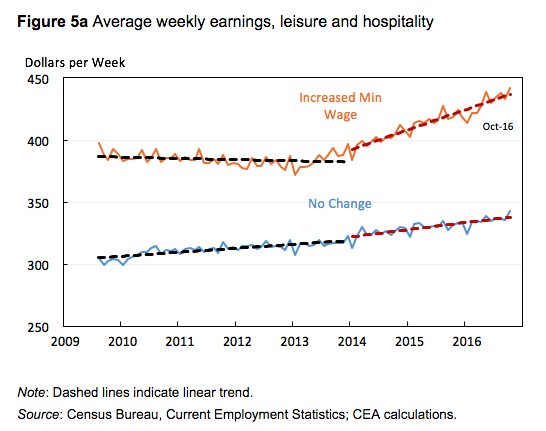What City Observatory did this week
1. Pollution and poor neighborhoods. Environmental justice advocates point out–quite correctly–that poor neighborhoods tend to suffer much higher levels of pollution than the typical neighborhood. While this is often due to the callous indifference of public officials to the plight of the poor and people of color (as well as the powerlessness of these groups), other factors are at work as well. Those with the means to do so generally avoid polluted locations, leaving only those too poor to afford to live elsewhere stuck in the most polluted places. The tendency to move away from pollution if you can do so, creates a self-sustaining dynamic that drives long term poverty. Two new research studies show how long-lived these processes are, tracing the location of today’s high poverty neighborhoods to places that had the highest levels of air pollution in Victorian England, and a similar pattern for the low-lying marshy areas of Manhattan, which were long regarded as un-healthy.

2. Are the ‘burbs bouncing back? An article in last week’s Wall Street Journal–“Suburbs outstrip cities in population growth” offered up the seemingly contrarian claims that suburbs are now outperforming cities, are nearly or more attractive to young adults, and as diverse as cities. The article is based on a report issued by the Urban Land Institute on December 5. We take a close look at the ULI report’s novel method of defining neighborhoods as urban or suburban. While its a thoughtful attempt to take a more nuanced view of the urban-suburban continuum, we think it fails as a basis for making sweeping claims about national trends because it effectively grades on a curve–using different numerical thresholds to classify areas as urban or suburban in different metropolitan areas. We think that there are also good reasons to be skeptical of its specific claims about city growth; its headline findings rest on 15-year data which combines the housing bubble with a very different period since then. Bottom line: Cities have outgrown suburbs in recent years, are attracting a disproportionate share of young adults, and are more diverse than suburbs.
3. Finally, an anti-poverty policy that works. Its long been argued that minimum wages aren’t effective in fighting poverty because they lead employers to reduce the number of hours of paid work or hire fewer workers. The recent adoption by 18 states of higher minimum wages provides a kind of natural experiment for testing that theory. A new paper from the President’s Council of Economic Advisers shows that in the states with higher minimum wages, average earnings for workers in food service and accomodation industry’s increased significantly, while employment levels showed no decline from previous rates.

4. Some thoughts on Portland’s proposed inclusionary housing policy. Portland is considering adopting an inclusionary housing requirement that would require most new apartment developments with more than 20 units to set aside 20 percent of their units for households earning no more than about $58,000 per year. While advocates of the policy have assured the City Council that such requirements are commonplace, the proposed Portland policy differs from that in other jurisdictions in that its scope is much wider. In cities like Chicago and New York, only developers seeking to up-zone their properties or who are getting some public subsidy typically are required to meet inclusionary requirements. Portland’s much more stringent policy is likely to backfire–leading many developers to drop out of the Portland market, aggravating the city’s housing supply problems, and leading to higher rents–for everyone.
Must Read
1. Is rental affordability a symptom of poverty or gentrification? The University of Minnesota’s Myron Orfield and Will Stancil are some of the most thoughtful and relentless scholars investigating race, poverty and segregation. In an op-ed in the Minneapolis Star Tribune, they take on the claim that the increase in rental affordability problems in the Twin cities is being caused by gentrification. Earlier press coverage pointed to declining affordability, as measured by the number of households paying more than 30 percent of their income for housing (a standard which we regard as problematic). Journalists and local elected officials were quick to blame gentrification, with one city council member saying she could “feel” the gentrification. Orfield and Stancil push back, pointing out that the decline in affordability has more to do with a 44 percent decline in typical black household incomes than it does with a 3 percent increase in rents. The real problem, they argue, is the persistence and continuing growth of neighborhoods of concentrated poverty.
2. Black flight to suburbs and segregation in Detroit. The Center for Michigan has a powerful new report looking at decades of neighborhood change in the Detroit metropolitan area. It begins by recounting the tale of white suburban flight from the city of Detroit, and illustrating how segregated the city (and region) had become by 1970. It then uses census data to track population growth since then. Like whites before them, the region’s black population has increasingly suburbanized, but its done so in a way that has mostly recapitulated the earlier pattern of segregation at a larger scale. Even though many formerly predominantly white suburbs now have black residents, they tend to be disproportionately found in a few neighborhoods. The report shows how Detroit ranks compared to other metropolitan areas, and tracks change in segregation over time; though its improving, the Detroit metro area remains among the nation’s most segregated by race.
New Knowledge
1. When Raj Chetty and his research colleagues speak, we listen. Chetty, and his co-authors at Stanford, Berkeley and Harvard — have a new study that sheds further light on intergenerational economic mobility. The new study uses the biggest of big data sets (anonymized tax records covering decades) to examine how the earnings of adults in each generation compare to those earned by their parents. The results shed light on perhaps the most fundamental measure of economic progress: whether children grow up to have a higher income than their parents. The news isn’t good: For those born in the 1980s for example, only about half are earning more than their parents did at the same age, in inflation-adjusted terms. For those born in the early 1940s fully 90 percent earned more than their parents.

As with their previous research, Chetty et al have copious data looking at trends by income, education and geography: we’ll be taking a closer look at their data in a future commentary at City Observatory. But don’t wait for us: have a look at the findings available now on the Equality of Opportunity website.
2. Mapping Mega-regions with commuting data. A favorite pastime of geographers is re-drawing the nation’s internal boundaries using principles that transcend the political or geologic features we’re familiar with. The latest effort to parse the nation into city-centered “mega-regions” comes from Garrett Dash Nelson and Alasdair Rae of the University of Sheffield. Their article, “An economic geography of the United States, from Commutes to Mega-regions,” uses data on commuting patterns from the Census Bureau’s Local Employment and Housing Dynamics (LEHD) data set. Their maps show flows of commuters–chiefly from the exurban periphery toward the urban core–which in turn defines the boundaries of mega-regions. The result: colorful maps, like the following.


